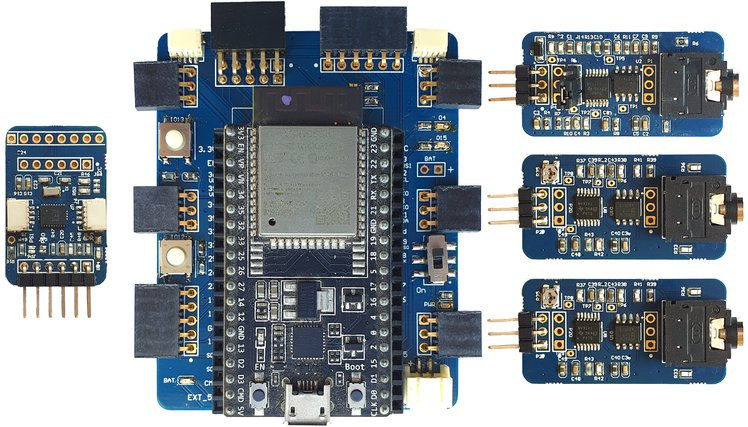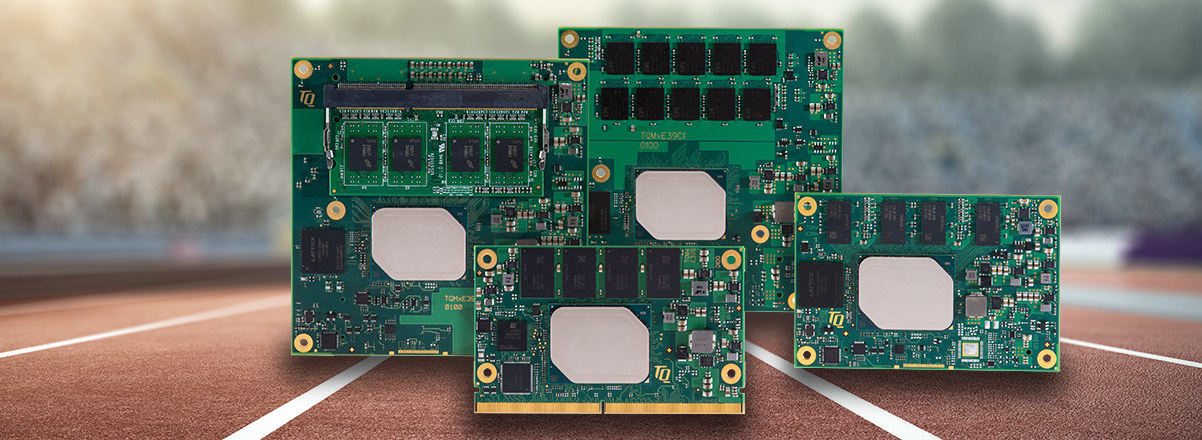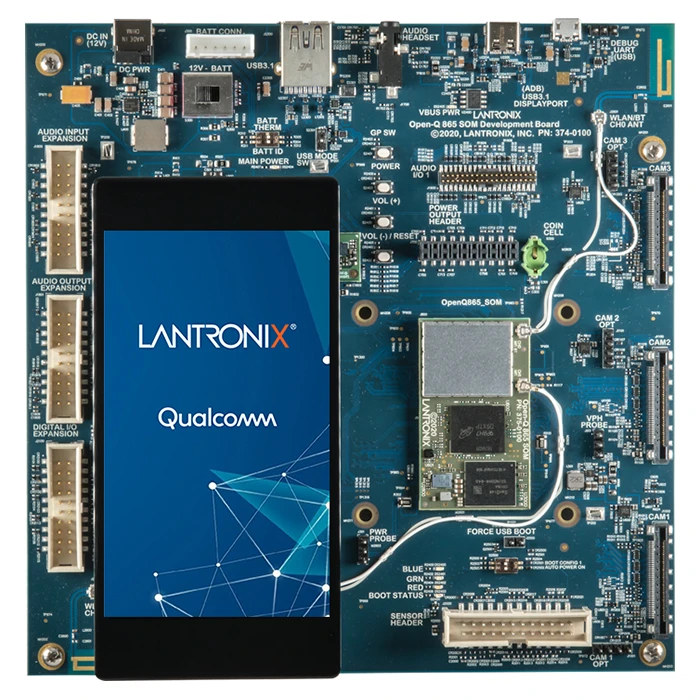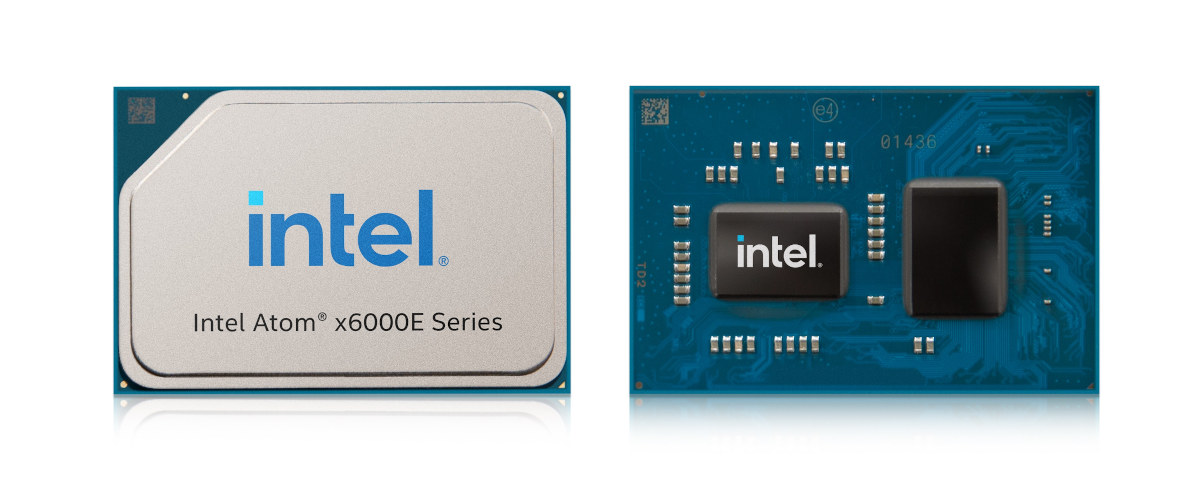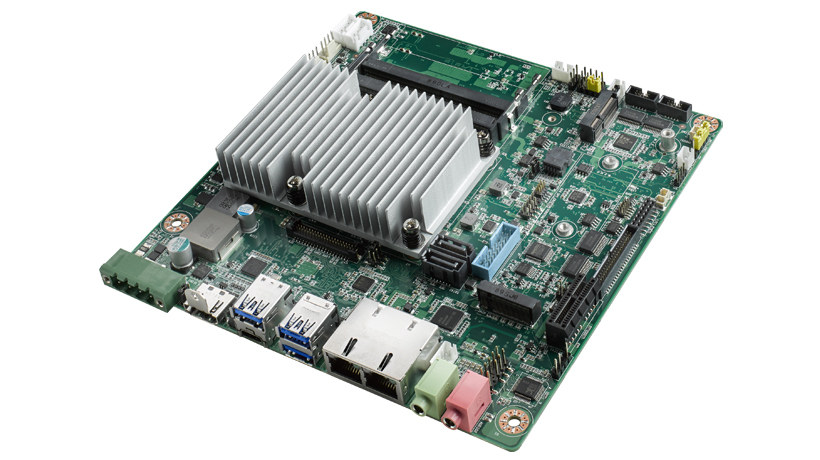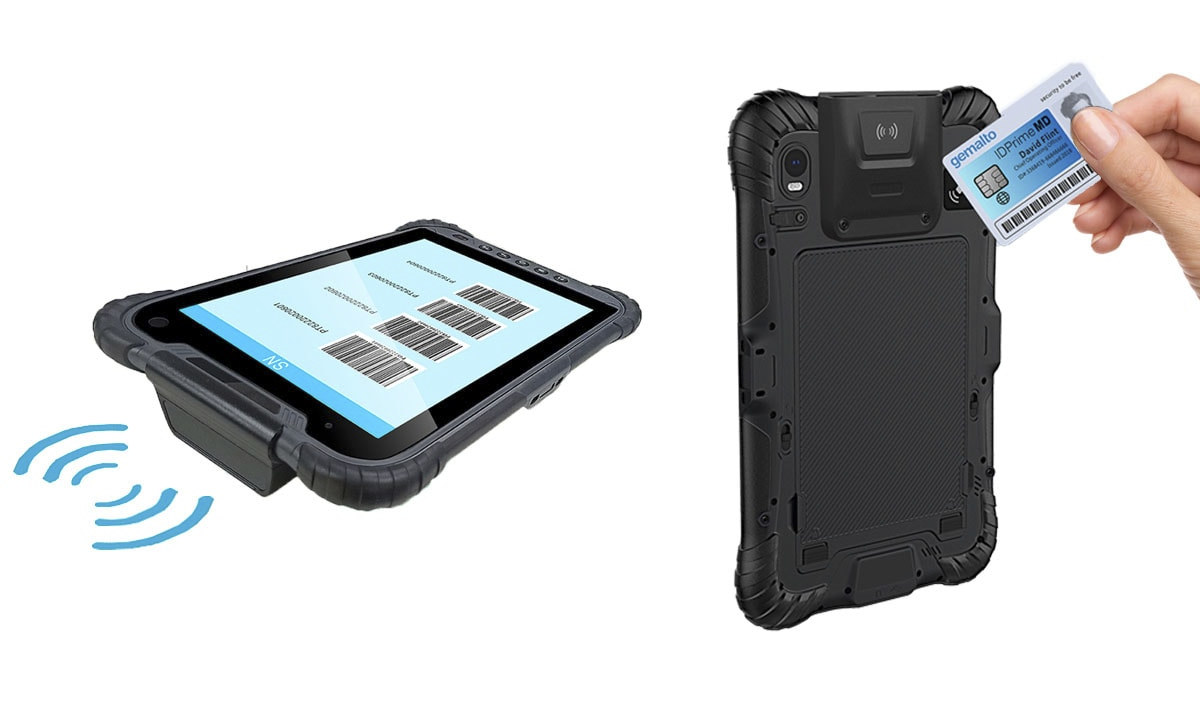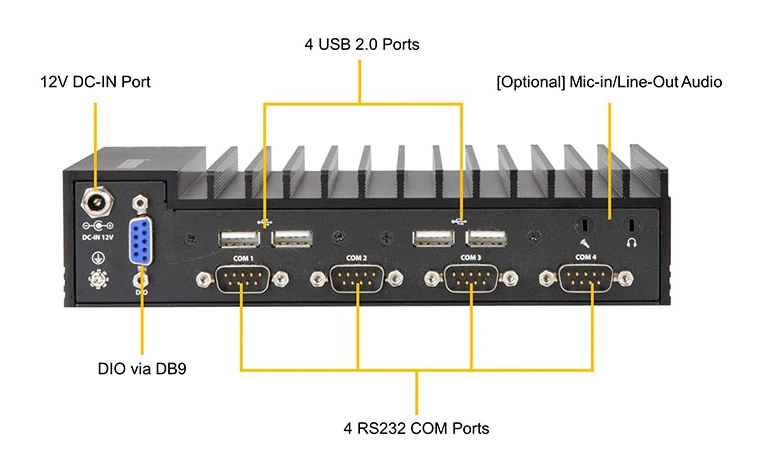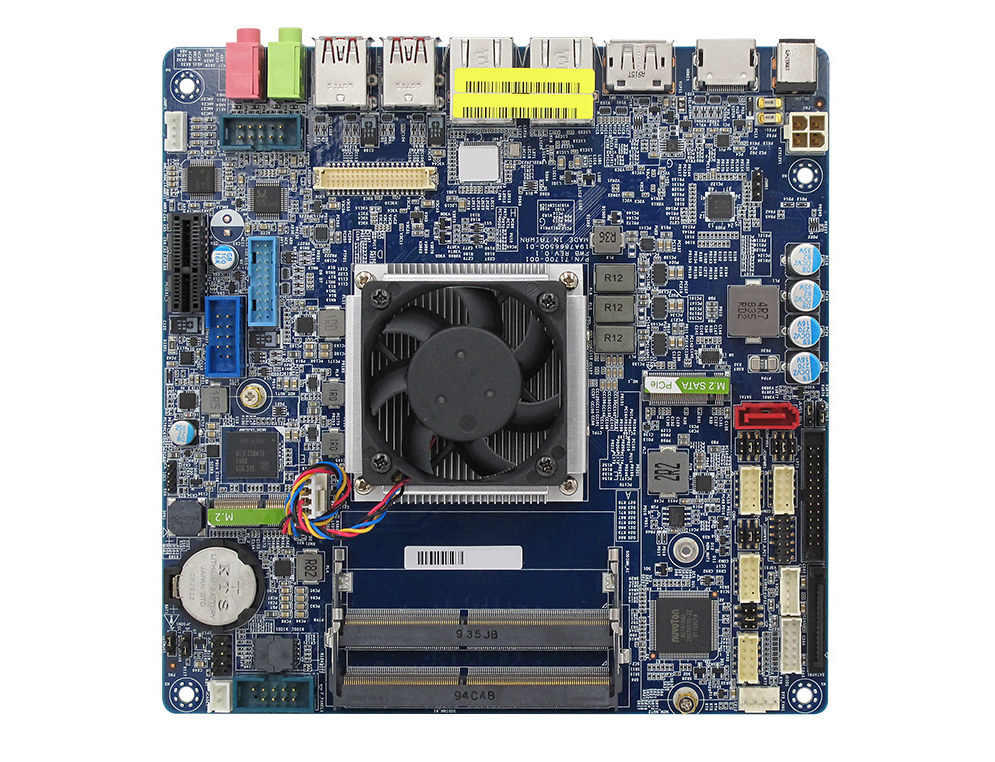Over the year, The maker community has designed several platforms to monitor vital signs with boards like Healthy Pi v4 or HeartyPatch both of which are powered by an ESP32 WiFi & Bluetooth wireless SoC. WallySci has designed another all-in-one wireless bio-sensing platform, called E3K, that also happens to be powered by Espressif Systems ESP32 chip, and can be connected to an electromyography (EMG) sensor to capture muscle movements, an electrocardiography (ECG) sensor to measure heart activity, and/or an electroencephalography (EEG) sensor to capture brain activity. The board also has an extra connector to connect a 9-axis IMU to capture motion. E3K main board which the company refers to as “Data Communication and Processing Unit” (DCPU) comes with the following specifications: Supported wireless board – ESP32-DevKitC with ESP32-D0WD-V3 dual-core 32-bit LX6 microprocessor, up to 240 MHz, Integrated 520 KB SRAM, 16 MByte SPI flash. 2.4 GHz WiFI 4, and Bluetooth […]
TQ Embedded Unveils Intel Elkhart Lake COM Express and SMARC 2.1 Computers-on-Module
German technology company TQ Embedded has unveiled the TQMxE40 computer-on-module families based on the Intel Atom x6000E series, as well as Intel Pentium and Celeron N and J “Elkhart Lake” processors that comply with COM Express Mini, COM Express Compact, and SMARC computer-on-module standards. The company’s TQMxE40M, TQMxE40S, and TQMxE40C1/C2 embedded modules are offered with all twelve Intel Elkhart Lake processors, up to 64GB RAM, and a -40°C to +85°C industrial temperature range. The computers-on-module are especially suited to industrial automation, medical technology, measurement technology, robotics as well as transport and logistics applications. TQMxE40M COM Express Mini Module Specifications: SoC – Intel Atom x6000E Series or Intel Pentium and Celeron N and J Series part of Elkhart Lake family with 4.5 W to 12 W TDP System Memory – 4, 8, 16 GB LPDDR4/4x with IBECC (In-band EEC) Storage – 8 to 256 GB eMMC flash, 32kbit EEPROM COM Express […]
Lantronix Open-Q 865XR SoM Brings Snapdragon XR2 Processor Beyond Virtual Reality
Qualcomm Snapdragon XR2 (SXR2130P) is the latest and most powerful virtual & extended reality processor from the company and Facebook recently announced it would be found in their Oculus Quest 2 standalone VR headset. But it now looks like the processor will be used well beyond virtual reality applications as Lantronix has unveiled a Snapdragon XR2 SoM with Open-Q 865XR system-on-module designed for AI boxes, video conference systems, multi-camera systems, machine vision platforms, advanced high-resolution multi-display systems, medical imaging, and handheld data collectors. Open-Q 865XR SoM Open-Q 865XR SoM specifications: SoC – Qualcomm SXR2130P (Snapdragon XR2) Octa-core processor with 1x Kryo Gold prime @ 2.84 GHz + 3x Kryo Gold @ 2.42 GHz + 4x Kryo Silver @ 1.81 GHz Adreno 650 GPU @ up to 587 MHz Hexagon 698 DSP with quad Hexagon Vector eXtensions Spectra 480 Image Signal Processor Adreno 665 Video Processing unit for decode up to […]
Intel Unveils Atom x6000E Series, Celeron and Pentium Elkhart Lake IoT Edge Processors
We’ve been expecting Intel Elkhart Lake processors for more than a year, and the company has now officially announced the “IoT-enhanced processors” with a new Atom x6000E Series, as well as some Celeron and Pentium N/J parts. Last year, we thought Elkhart Lake would succeed Gemini lake, but the new 11th generation 10nm processors may not be found in many consumer devices, as they target IoT edge applications with additional artificial intelligence (AI), security, functional safety, and real-time capabilities. The company has announced a total of 12 Elkhart Lake processors with all but one featuring 10th Generation Intel UHD Graphics and divided into eight Atom x6000E series processors. and four Celeron/Pentium parts Intel further explains Elkhart Lake IoT edge processors deliver up to two times better 3D graphics compared to Pentium J4205 Apollo Lake processor, come with Intel Programmable Services Engine real-time offload engine with support for out-of-band and in-band […]
Whiskey Lake Thin Mini ITX SBC Features Eight USB Interfaces, Dual SATA, Dual GbE, and More
Advantech AIMB-233 thin mini-ITX SBC is equipped with a choice of 15W Intel Whiskey Lake processors, supporting up to 32GB RAM, and offering plenty of high speed I/Os include eight USB interfaces, two SATA III ports, dual Gigabit Ethernet, several PCIe & M.2 expansion slots, as well as triple display support, six COM ports, and more. The motherboard complies with the “thin mini-ITX” requirement of not exceeding 2.5cm in height, and Advantech expects the thin Mini-ITX SBC to be found in nursing carts, patient care systems, Human-Machine Interfaces (HMI), and mobile devices. AIMB-233 thin mini-ITX SBC specifications: SoC (One or the other) Intel Core i7-8665UE quad-core/octa-thread processor @ up to 1.7 / 4.4 GHz with Intel UHD Graphics 620 – 15W TDP Intel Core i5-8365UE quad-core/octa-thread processor @ up to 1.6 / 4.1 GHz with Intel UHD Graphics 620 – 15W TDP Intel Core i3-8145UE dual-core/quad-thread processor @ up to […]
Snapdragon 626 Powered Rugged Tablet Comes with NFC, RFID and Barcode Readers
Estone Technology has launched another rugged tablet with UA-80 IP-67 waterproof rated, and MIL-STD-810G compliant rugged Android tablet powered by a Qualcomm Snapdragon 626 mobile platform driving an 8″ capacitive touchscreen display. The tablet is equipped with up to 8GB RAM, up to 128GB storage, and comes with HF(NFC) and UHF RFID readers and an optional barcode reader for healthcare, construction, retail, oil and gas, and logistics use cases. Estone UA-80 tablet specifications: SoC – Qualcomm MSM8953 Pro (Snapdragon 626) octa core Cortex-A53 processor @ up to 2.2GHz with Adreno 506 GPU with support for OpenGL ES 3.1 + AEP System Memory – 4GB LPDDR3 (Option: 8GB LPDDR3) Storage – 32GB eMMC flash (Option: 64GB, 128GB) Display – 8″ sunlight-readable IPS LCD with 1200 x 800 resolution, 450 nit brightness, 10-point touch, and chemically hardened cover glass Audio – Built-In microphone and 8 Ohm/1W speaker, 3.5mm 4-pole audio jack with […]
Supermicro Launches SuperServer SYS-E100-9W-H Fanless Whiskey Lake Embedded Mini PC
US-based Supermicro is known for its server products, but the company’s latest SuperServer SYS-E100-9W-H fanless embedded mini PC targets other applications, specifically industrial automation, retail kiosks, smart medical devices, and digital signage. The mini PC is equipped with an Intel Core i7-8665UE Whiskey Lake Embedded processor coupled with up to 64GB DDR4 memory, and offers plenty of connectivity options with dual Gigabit Ethernet, eight USB ports, four serial ports, and dual video output with HDMI and DisplayPort.SuperServer SYS-E100-9W-H specification: SoC – Intel Core i7-8665UE quad-core/octa-thread Whiskey Lake Embedded processor @ 1.7 GHz (Base) / 4.4 GHz (Turbo) with Intel UHD Graphics 620; 15W TDP System Memory – 2x DIMM slots for up to 64GB DDR4-2400MHz (non-ECC) Storage – Support for M.2 NVMe/SATA SSD Video Output – HDMI and DisplayPort Audio – ALC 888S HD Audio codec, optional Mic-in/Line-Out Networking – Dual Gigabit Ethernet via Intel I210IT and Intel I219LM USB […]
BCM MX4305UE Industrial Mini-ITX Motherboard Features Intel Celeron 4305UE Processor
Yesterday, as I wrote about AAEON UP Xtreme SBC, I realized that while I had seen some other Intel Celeron 4305UE Whiskey Lake boards with 3.5-inch and Pico-ITX form factors, I’ve just found out an industrial mini-ITX motherboard from BCM Advanced Research equipped with the processor. Just like other similar industrial Whiskey Lake SBC’s, Intel Core i3/i5/i7 Whiskey Lake-U Embedded processors are offered as options/upgrades for BCM MX4305UE motherboard, and the company says the board is designed for power-sensitive IoT devices and embedded applications such as video wall control management system, point-of-sales systems (POS), kiosks, automated vending machines, panel PCs, digital signage, medical and gaming devices. BCM MX4305UE mini-ITX board specifications: SoC Default – Intel Celeron 4305UE dual-core Whiskey Lake processor @ 2.0 GHz (base, no turbo frequency) with Intel UHD Graphics 610; 15W TDP Options Intel Core i7-8665UE quad-core processor up to 4.40 GHz max – TDP: 15W Intel […]


